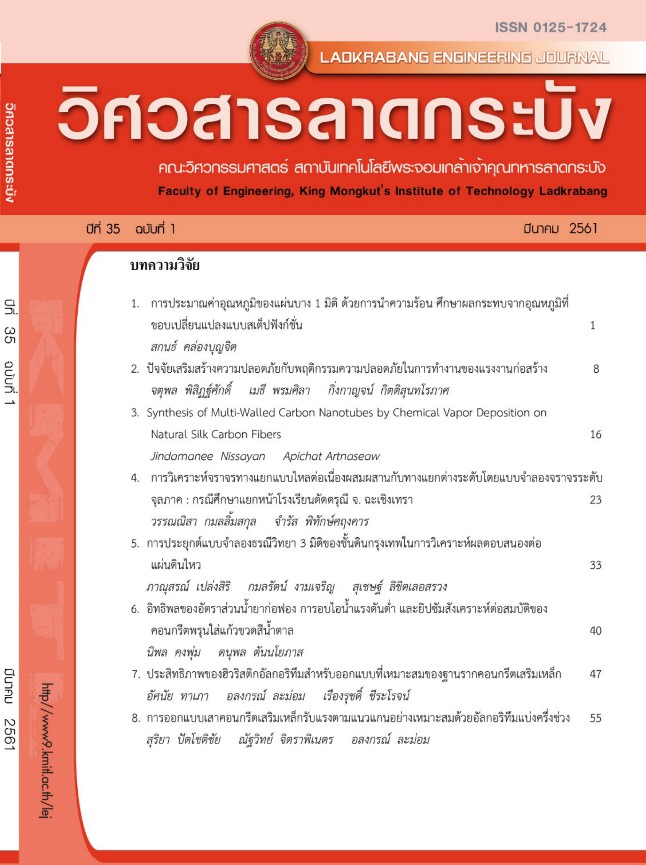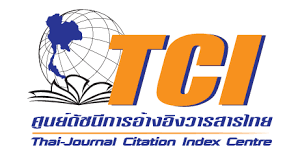Influence of Foam Agent Ratios, Low Pressure Steam Curing and Synthetic Gypsum on Properties of Foamed Concrete Containing Brown Bottle Glass
Keywords:
Brown bottle glass, Synthetic gypsum, Foamed concrete, Protein foaming agent, Low pressure steamAbstract
This paper is a study on physico-mechanical properties of foamed concrete (FC) containing ground brown bottle glass dosage protein foaming agent (PFA) in three proportions of 0.40, 0.50 and 0.60wt% of water. And also, synthetic gypsum (SG) was replaced partially ordinary Portland cement, type 1 with and without low pressure steam (LPS) condition for 8 hours then cured under ambient condition for 3, 7 and 28 days. Bulk density and compressive strength was determined. Furthermore, mineral phase and microstructure were analyzed. Testing results revealed PFA contents, curing after LPS and SG contents effect of changing development on bulk density and compressive strength. The BBG-FC specimen dosed PFA of 0.60 through LPS and cured under ambient 28 days provided highest compressive strength of 91 ksc and bulk density of 1,259 kg/m³. The BBG-FC blended two SG ratios specimens were met some class of TIS2601-2556 specification. Microstructure and mineralogy analysis revealed that the interconnected air-void pores, reformed gypsum crystals and needle-like ettringites.
References
Q-CON, “Lightweight Concrete,” URL: https:// www.qcon.co.th/knowledge, Retrieved 12/07/2560.
Promotion and Publication Section, “Recycle Waste Bank Manual,” 7thed., Dept. of Environmental Quality Promotion, Ministry of Natural Resources and Environment, 2017.
J. Suntharanurak and D. Tonnayopas, “Strength Development and Sulfate Durability of Waste Clear Bottle Glass Aggregate Concrete Containing Sugarcane Bagasse Ash,” The Journal of Industrial Technology, Vol.10, No.1, pp.63-75, 2014.
Foam Concrete. URL https://www.clcprolicon.com/ th/article07_1.php Retrieved 1/07/2560.
TIS 2601-2556, “Cellular Lightweight Concrete Blocks using Preformed Foam”, Thai Industrial Standards, 2556.
M. Limbachiya, M.S. Meddah, and S. Fotiadou, “Performance of Granulated Foam Glass Concrete,” Construction and Building Materials, Vol.28, Issue1, pp.759–768, March, 2012.
S. K Lim, C.S. Tan, X. Zhao and T.C. Ling, “Strength and Toughness of Lightweight Foamed Concrete with Different Sand Grading,” KSCE Journal of Civil Engineering, Vol.19, Issue7, pp. 2191-2197, Nov., 2015.
ASTM C618-15, “Standard Specification for Coal Fly Ash and Raw or Calcined Natural Pozzolan for Use in Concrete,” West Conshohocken, PA, 2015.
ASTM D5370-14, “Standard Specification for Pozzolanic Blended Materials in Construction Applications,” West Conshohocken, PA, 2014.
P. Suksawat and P. Bunkongthong, “Foam Concrete Containing Para Rubber Wood Ash and Oil Palm Ash,” Mining Engineering Project Report, No. MNE1/2557, Prince of Songkla University, 2013.
S. Nikhom and D. Tonnayopas. “Characterization of Some Properties of Flue Gas Desulfurization Gypsum Composite Blending Rubber Wood Fly Ash,” The 14th National Convention on Civil Engineering, 13-15 May 2009, Suranaree University of Technology, Vol.5, pp.1793-1799, 2009.
D. Falliano, D. De Domenico, G. Ricciardi, and E. Gugliandolo, “Experimental Investigation on the Compressive Strength of Foamed Concrete: Effect of Curing Conditions, Cement Type, Foaming Agent and Dry Density,” Construction and Building Materials, Vol.165, pp.735–749, March, 2018.
Y. H. Mugahed Amran, N. Farzadnia, A.A. Abang Al, “Properties and Applications of Foamed Concrete; A Review,” Construction and Building Materials, Vol.101, Part1, pp.990–1005, Dec., 2015.
A. A. Hilal, N.H. Thom, A.R. Dawson, “On Void Structure and Strength of Foamed Concrete Made without/with Additives,” Construction and Building Materials, Vol.85, pp.157–164, June, 2015.
J. Jiang, Z. Lu, Y. Niu, J. Li, and Y. Zhang, “Study on the Preparation and Properties of High-Porosity Foamed Concretes Based on Ordinary Portland Cement,” Materials and Design, Vol.92, pp.949–959, Feb., 2016.
T. T. Nguyen, H.H. Bui, T.D. Ngo, and G.D. Nguyen, “Experimental and Numerical Investigation of Influence of Air-voids on the Compressive Behaviour of Foamed Concrete,” Materials & Design, Vol.130, pp.103-119, Sept., 2017.
J. Zhang, Y. Yan, Z. Hu, “Preparation and Characterization of Foamed Concrete with Ti-Extracted Residues and Red Gypsum,” Construction and Building Materials, Vol.171, pp.109-119, May, 2018.
Downloads
Published
How to Cite
Issue
Section
License
The published articles are copyrighted by the School of Engineering, King Mongkut's Institute of Technology Ladkrabang.
The statements contained in each article in this academic journal are the personal opinions of each author and are not related to King Mongkut's Institute of Technology Ladkrabang and other faculty members in the institute.
Responsibility for all elements of each article belongs to each author; If there are any mistakes, each author is solely responsible for his own articles.






